May 27, 2025
Author:Sam Wonder
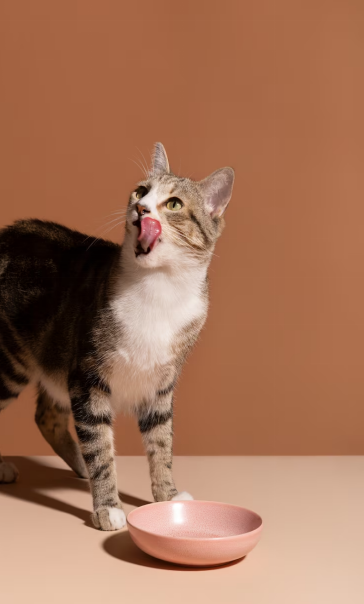
Raw meat sounds primal. Natural. Even right, especially for a predator with teeth built to tear and shred. But here’s the catch: raw doesn’t always mean safe. Salmonella, E. coli, and nutrient imbalance aren’t buzzwords—they’re real threats hiding behind that uncooked chicken breast.
One study found bacteria in 6 out of 10 raw meat samples sold for pets. That’s not a minor margin. It’s a warning sign with claws. Still, many pet owners swear by raw feeding. So what gives?
In this article, we’ll cut through the confusion and give you clear, no-nonsense answers on raw chicken for cats:
● What raw chicken actually does to your cat’s body
● Why some vets warn against it—and what others recommend
● The difference between grocery store chicken vs raw diets designed for cats
● Safe handling tips if you do choose to serve it raw
If you’ve ever tossed your cat a bite of uncooked meat—or thought about switching to a raw diet—you’re exactly where you need to be.
Raw chicken seems simple. Natural. A straight shot of protein your carnivore cat is wired to handle.
And that’s partly true. Cats are built to eat meat. Their bodies run on protein, not carbs. Their guts are shorter, their stomach acid stronger, and their metabolism thrives on amino acids like taurine. Raw chicken checks a few of those boxes—especially for muscle growth, heart function, and immune support.
But the rest? It gets messy fast.
Raw chicken alone isn’t enough. It lacks the full spectrum of nutrients your cat needs to stay balanced. There’s too much phosphorus, not enough calcium. B vitamins drop off. Taurine levels might fall short after processing or freezing.
What happens then? Over time, your cat’s bones weaken. Their energy dips. Internal systems start to slip—quietly at first.
That’s where WOpet’s automatic feeders come in. They’re designed to deliver high-protein meals with controlled portions, minus the guesswork and raw handling risk. No bacteria. No missed nutrients. No 3 a.m. worry about whether that chicken sat out too long.
You still give your cat the protein they crave—but with consistency, safety, and zero stress. Because raw chicken may look simple, but inside, your cat. It can cause far more than you bargained for.
Feeding raw chicken sparks strong opinions in the veterinary world. Some vets issue hard warnings. Others take a more measured approach. The split stems from one key tension—safety vs. species-appropriate nutrition.
Let’s break it down.
Veterinarians who oppose raw chicken usually start with the health risks. Children, elderly family members, and immunocompromised individuals are especially vulnerable.
Some vets have seen these infections firsthand in clinical settings. That’s why they push for sterilized diets—like commercial wet or dry food—or recommend cooking any meat before serving.
On the flip side, some vets support raw diets under strict supervision. They argue that cats evolved to digest raw meat, and when it’s prepared properly, with complete nutritional balance and proper hygiene, it can benefit digestion, energy levels, and skin health.
But here's the catch: raw feeding isn't tossing a chicken breast into a bowl. These vets emphasize formulation. They often recommend working with a veterinary nutritionist to ensure all nutrients—calcium, taurine, phosphorus, and more—are precisely balanced.
The middle ground? Most vets discourage DIY raw chicken feeding but stay open to commercial raw diets that are nutritionally complete and undergo pathogen-reduction processes like HPP (high-pressure pasteurization).
That’s the nuance: it’s not the idea of raw that’s flawed—it’s how it’s done. WOpet’s portion-controlled feeding systems support high-protein diets without the contamination risk, offering a safer route for those who value nutritional precision.
The disagreement isn’t about caring—it’s about control, quality, and consistency.
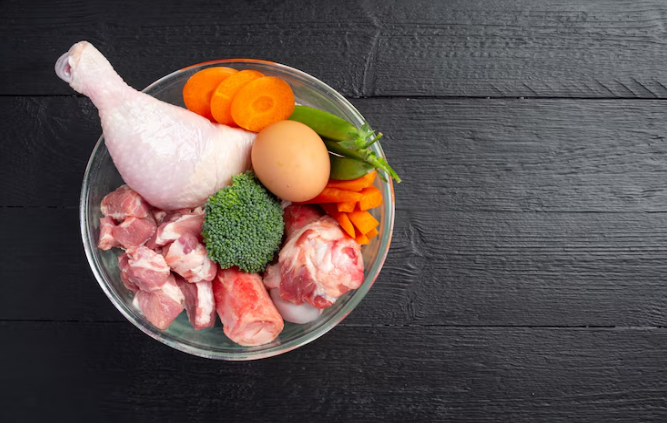
Not all raw chicken is created equal. What you grab off a grocery shelf and what goes into a raw diet formulated for cats might look similar, but they function very differently once they hit the bowl.
Let’s look at the differences that matter.
Raw diets formulated for cats, however, are processed differently from the start. These products are often manufactured under pet-specific standards using pathogen-reduction methods such as:
● High Pressure Processing (HPP): A non-thermal technology that uses extremely high water pressure to inactivate microbial pathogens without affecting nutrient composition.
● Flash Freezing: Quickly brings the product to sub-zero temperatures to slow microbial growth and preserve freshness at a cellular level.
This distinction in end-use preparation drives completely different safety protocols. Human-grade raw poultry is not tested or handled with raw feeding in mind, whereas pet-specific raw diets are treated and preserved as-is for uncooked consumption.
Pet-specific raw diets are subjected to tighter control over storage protocols. Manufacturers usually implement:
● Cold-chain logistics with uninterrupted freezing from production to delivery
● Batch-specific handling instructions, including thawing timelines and spoilage indicators
● Vacuum-sealed or modified atmosphere packaging (MAP) to inhibit aerobic microbial growth
These products are also portioned for feeding in small increments, which minimizes exposure during serving. Improperly thawed or stored grocery meat, by contrast, increases the risk of bacterial cross-contamination, especially in multi-pet or child-accessible environments.
Because small inconsistencies in raw feeding can cause big health issues over time. Choosing a properly balanced raw product—or using WOpet’s smart feeding systems to deliver complete, vet-approved meals—means your cat gets what they need every time, without the bacterial roulette. Precision beats guesswork. Especially when your cat’s health is on the line.
Tossing raw chicken into your cat’s bowl sounds simple. But raw feeding isn’t grab-and-go. One slip-up—and you’re not just risking your cat’s stomach. You’re putting your whole household on the line. If you’re going to feed raw, you’ve got to treat your prep like it matters. Because it does.
● Prep Like You Mean It: Set aside one cutting board, one knife, one bowl—and don’t use them for anything else. Raw poultry can spread bacteria fast, and you don’t want that riding onto your dinner plate later. Go with stainless steel or BPA-free plastic. Skip anything porous like wood—it traps bacteria and doesn’t clean easily. Wash everything with hot, soapy water the second you’re done, then hit it with a safe disinfectant.
● Freeze Smart, Not Late: Don’t leave raw chicken hanging out in the fridge “for later.” Portion it into airtight containers or freezer-safe bags as soon as you get home. Then freeze it. When it’s mealtime, thaw it in the fridge, not on the counter. Once it’s thawed, you’ve got 24 hours. After that? Trash it. And if your cat doesn’t finish the meal in 30 minutes? Trash that, too. No second servings.
● Mealtime Matters: That bowl your cat licks clean every day? It needs to be up to the job. If it’s not dishwasher-safe or easy to sanitize, keep it out of the raw rotation. Better yet, use a separate bowl that’s smooth, easy to clean, and made specifically for raw meals. Or—skip the hassle altogether. WOpet’s smart automatic feeders offer precise, portion-controlled meals without the bacterial gamble. They’re not meant for raw meat, but they do let you serve high-protein, vet-approved food with zero mess. You get control. Your cat gets consistency.
● Hands Off—After You Wash Them: Once you’ve handled raw chicken, wash your hands like your cat’s health depends on it—because it does. Soap, warm water, 20 seconds. Those bacteria don’t stay in the bowl. It spreads to counters, switches, and toys.
● Leftovers Aren’t Worth the Risk: If there’s anything left after feeding time, seal it in a clean container, label it, and toss it within 24 hours. Anything that’s been sitting out longer than 30 minutes? Straight into the trash. This isn’t overkill. It’s smart. Bacteria don’t care how careful you usually are.
Raw feeding takes work. It’s not casual. But if you’re committed, these steps help keep it clean, controlled, and safe for everyone in the house, especially your cat.
Feeding raw chicken to cats isn’t a black-and-white issue. It’s filled with trade-offs—between instinct and science, convenience and control, risk and reward. But now, you’ve got the full picture.
You understand what raw chicken actually does inside your cat’s body. You’ve seen where vets draw the line and when they stay flexible. You’ve unpacked the critical differences between a supermarket drumstick and a professionally formulated raw diet. And you’ve learned how to handle it all safely, without turning your kitchen into a hazard zone.
You’re not guessing anymore. You’re making informed calls. And if raw feels like too much work or risk, that’s where WOpet feeders step in. They give you the precision, reliability, and control your cat deserves—no pathogens, no prep, no second-guessing.
Here’s a quick recap of what you covered:
● Raw chicken supports carnivore needs, but it’s far from nutritionally complete
● Vets are divided—some back raw feeding with tight controls, others warn strongly against it
● Grocery store chicken is built for cooking, not for raw consumption
● Raw pet diets are specially balanced with essential nutrients that cats can’t go without
● Safe handling means strict hygiene, proper freezing, and limited exposure
● WOpet’s automatic feeders help deliver safe, protein-rich meals with less risk and more convenience
Feeding raw isn’t about following trends. It’s about doing what’s right for your cat, with all the facts in front of you.
Label:
Popular Post

What to Feed a Sick Dog With No Appetite? [2025 Guide]
May 16, 2023
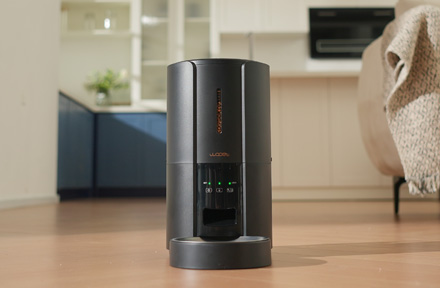
Troubleshooting Common Issues with Automatic Pet Feeders: Tips & Tricks for Pet Owners
Oct 26, 2023
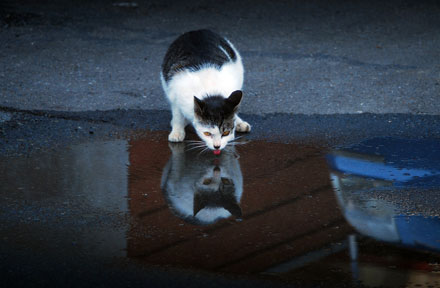
Why Does My Cat Cough After Drinking Water? 8 Potential Reasons
Mar 13, 2023
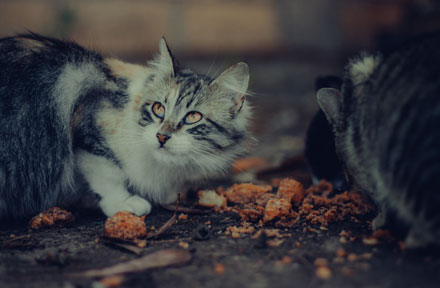
My Cat Only Eats A Little at A Time - What to Do?
Feb 27, 2023
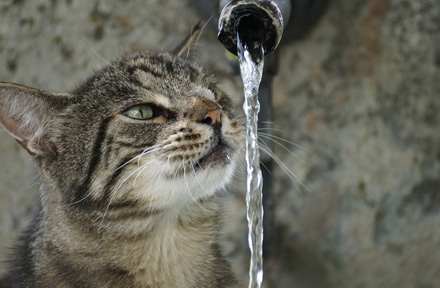
Why is My Cat Throwing up Water? Top 5 Causes Here
Feb 08, 2023
$99.99
$129.99
Copyright © 2025 WOPET. All Rights Reserved.